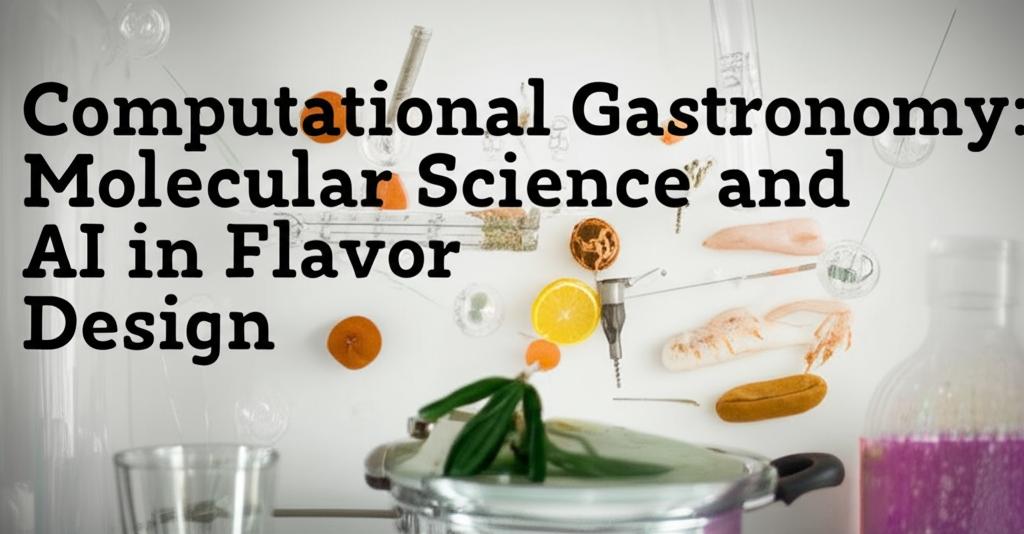The worlds of culinary arts and technology are increasingly intertwined, with computational gastronomy leading a flavorful revolution. This emerging field leverages molecular science and artificial intelligence (AI) to decode and design flavors in ways previously unimaginable. By analyzing vast datasets of flavor molecules, recipes, and consumer preferences, AI is not just predicting a hit, but actively helping to create it.
At its core, computational gastronomy uses data-driven approaches to understand food on a molecular level. Scientists and AI algorithms delve into the chemical compounds that make up ingredients and how they interact to create taste and aroma. This granular understanding allows for the precise prediction of flavor profiles and how different ingredients will pair together. Companies are utilizing AI to scan and analyze data from millions of recipes, social media trends, consumer reviews, and sales patterns to gain real-time insights into evolving consumer desires and predict which flavors will resonate with specific demographics.
One of the most significant impacts of AI in flavor design is its ability to accelerate innovation. Traditional methods of product development often involve lengthy trial-and-error. AI, however, can simulate countless variations of ingredient combinations, textures, and flavor profiles, significantly reducing development time and costs. For instance, AI has been instrumental in creating novel flavor combinations that human flavorists might not have considered, such as Firmenich's AI-developed natural beef flavor for plant-based meat alternatives and Coca-Cola's AI co-created Y3000 Zero Sugar beverage.
Molecular science plays a crucial role in this process. Databases like FlavorDB, which contains information on thousands of flavor molecules, their natural sources, and sensory profiles, provide the raw material for AI analysis. Researchers are developing tools like FlavorGraph, which uses molecular science and recipe data to predict ingredient pairings and suggest new combinations. These tools analyze the dominant flavor molecules in ingredients to explain classic pairings and propose novel ones, even those with dissimilar chemical makeups, by learning from historical recipe data.
The applications of computational gastronomy extend beyond just creating new and exciting flavors. AI is being used to:
- Optimize existing products: Fine-tuning formulations to enhance taste, texture, or nutritional value. Unilever, for example, used AI to expedite the flavor analysis for a low-salt bouillon from months to days.
- Personalize nutrition: AI can analyze individual dietary needs, preferences, and even genetic data to create customized meal plans and food products aimed at specific health goals.
- Enhance sustainability: By understanding ingredient properties and their environmental impact, AI can help develop recipes with lower carbon footprints or identify sustainable alternatives for existing ingredients.
- Improve food quality and safety: AI algorithms can monitor and analyze various stages of food production to ensure consistency and safety. Machine learning is also being employed for flavor pattern recognition to improve food quality and predict sensory perceptions.
The future of computational gastronomy promises even more sophisticated applications. We may see AI systems capable of simulating human taste and smell with remarkable accuracy, further revolutionizing product formulation. The development of generative AI models, like NotCo's Generative Aroma Transformer (GAT), allows for the creation of new flavor and fragrance formulations based on text prompts, indicating a future where describing a desired scent or taste could be the first step in its creation.
Platforms like Tastewise are using generative AI to decode consumer desires in real-time, analyzing billions of data points from social media, online recipes, and reviews. This allows food and beverage companies to move from reactive product development to proactive innovation, aligning products precisely with current consumer demands for aspects like affordability, exciting flavors, health benefits (such as gut health or high protein), and clean labels.
While the prospect of AI-designed flavors is exciting, the human element remains vital. Chefs and food scientists will likely collaborate with AI, using its data-driven insights as a creative partner to explore new culinary frontiers, optimize textures, and develop innovative plating techniques. The goal is not to replace human creativity but to augment it, leading to a future of food that is more diverse, personalized, sustainable, and delicious. As this technology continues to evolve, interdisciplinary collaboration between chefs, data scientists, molecular biologists, and AI experts will be key to unlocking the full potential of computational gastronomy.

